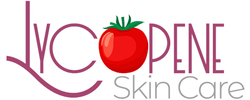Pimples, zits, spots, or whatever you may want to call them, are the visual manifestation of an inflammation of the pilosebaceous unit commonly referred to as acne. The pilo-sebaceous units are composed of the hair follicle and its associated oil glands and are found on both the face and the body. Acne is a common disease that affects males and females as well as teens and adults and carries an enormous financial and psychosocial impact. Despite the extensive research on the causes of acne very little is actually known about the exact sequence of events that lead to the development of a clogged pore and its transformation into an inflamed lesion. Historically, we have been led to believe the bacteria, including Proprionibacterium acne, as well as Staphylococcus and Streptococcus species play a role in inflammatory acne. However, the microbiological data from inflamed and non-inflamed lesions cultured from individual with acne do not entirely bear this out. There are comedones and inflamed lesions in which there is clear evidence of bacterial involvement. Recent research appears to demonstrate that the inflammatory response of acne is not attributable to the bacteria per se but rather the host immune response to the bacteria. It should be obvious that the conditions that breakdown the skin’s normal protective barrier allowing bacteria to penetrate into the deeper layers of the skin set the stage for a host inflammatory response that leads to the formation of pimples.
Why acne is such a paradox.
Paradoxically, many acne treatments are extremely drying, resulting in “microcracks” in the skin, allowing bacteria to penetrate. This is exactly the opposite action of what you want to happen. It is important, therefore, to keep the skin well hydrated in order to maintain the skin’s protective barrier while treating acne or to avoid using excessively drying acne products altogether.
What other factors might affect acne?
Other issues such as diet, hormonal variations, and stress have also been implicated as a cause of pimples and blemishes. The Western diet has been shown to be one of the environmental factors responsible for the acne epidemic. Western nutrition is defined as a diet high in calories, high in fats and meat intake, high glycemic load, and an increase in the consumption of insulin- and IGF-1- elevating dairy proteins. Metabolic signals created by the Western diet is detected by nutrient-sensitive enzymes (mTORC1) which plays a significant role in the production of fats. Leucine, a protein found in high amounts in dairy products and meats, stimulate the mTORC1 signals that convert leucine into fatty acids and sterols for sebum synthesis. Over production of sebum combined with dead skin cells normally shed by the skin form a plug that blocks the pores, trapping bacteria and setting up an inflammatory response that leads to the formation of pimples. Other factors too are responsible for an increase in mTORC1. Over-active mTORC1 increases male hormone levels which amplifies the signaling of the sebaceous follicles to over- produce sebum. Testosterone also directly activates mTORC1 and sebum production by the sebocytes.
New thinking to help reduce acne.
This new research provides a rational basis for a dietary approach in dealing with acne by reducing mTORC1 signaling. This is accomplished by reducing total caloric intake, reducing hyperglycemic carbohydrates, reducing insulin producing dairy products, and reducing leucine-rich dairy and meat products.
The causes of acne, pimples, and blemishes are multi-factorial therefore it can be concluded that there is no one treatment to keep your skin blemish free. If you suffer from acne it is important to keep your skin clean and well hydrated while you are treating your pimples. Avoid products that can overly dry your skin or cause irritation as this breaks down the skins normal protective barrier leading to the formation of more blemishes and avoid those foods that are known to increase pimple formation.

